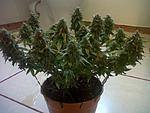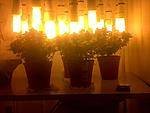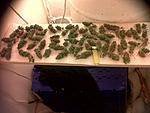brown_thumb
Active member
What worries me is the greenhouse has huge air leaks and I'll need to get those somewhat sealed so I can keep the plants warm enough in cold weather. Keeping them in those small pots until absolutely necessary to transplant allows me to bundle them close together and sheltered from the cold. When I transplant into fifteen 5-gallon buckets the heating requirement becomes very difficult this time of year.






